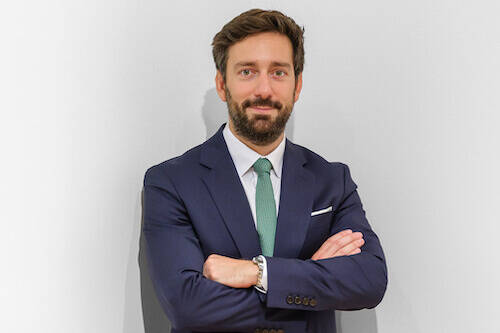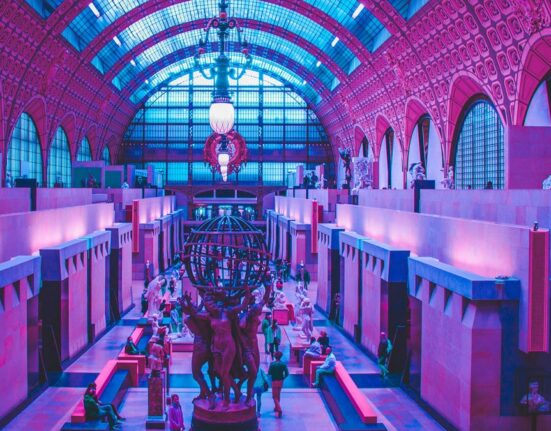Caroline Courvoisier. – You co-founded Anaxago about a decade ago: you are therefore one of the pioneers of crowdfunding in France. Now you’re partnering with Arnaud Dubois, a specialist in artistic heritage, in the company Matis, which offers club deals around works of art. How did the idea of this partnership come about?
François Carbone. – It’s a company that I would have liked to know a few years ago: I wanted to invest in works of art, but I had no prior knowledge. So I looked for a professional who could help me. I quickly came across Arnaud, who had been consulting in the purchase and sale of works of art for nearly ten years with his team. As our discussions progressed, we came to a common realization: there are few art investment services.
Arnaud had already encountered difficulties when trying to create a dedicated fund. Parallelly, I had invested through a leading platform in the United States that dealt with such topics. We realized there was nothing comparable in Europe. The entrepreneurial idea evolved… Arnaud is an expert in artistic heritage and knows perfectly how to source, buy, value works and place them in the right galleries for resale. On my part, I am very familiar with crowdfunding platforms, regulations, and investor relations because of my line of work.
Matis was born out of the synthesis of all this with one objective: to create a platform that allows investing in works of art, within a framework regulated by the AMF (the French financial markets regulator, ndlr).
In just one year, Matis has acquired works from leading artists: Warhol, Soulages, or Kusama, who is the highest-performing female artist in the history of art. You also resold a Lalanne, with an IRR of 31.5% for your investors in just 9 months! We know the emotional side of purchasing a work of art, but how do you choose so that the operation is financially profitable?
François Carbone. – Our investment thesis encompasses several points. The first is that works must be valued by both the market and museum institutions. The value of a work of art lies at the intersection of these two elements. The second is that we position ourselves in a post-war and contemporary period, on works between 500,000 and 5 million euros. Rationally, this is the segment where transaction volumes are the highest.
And the third point is that we put the works up for sale with gallery partners as soon as they are purchased by our investors. This network is crucial, as it allows us, beforehand, to get a clear idea of the potential for resale. Indeed, the real complexity of our job is to source great works at a good price while reselling them at a reasonable price to the final buyer.
It’s a niche market and transaction fees are high. Works sold at auction houses include a 15% fee for the seller and 25% for the buyer. In other words, if you buy a work at hammer for 1 million euros, you will pay 1.25 million euros and the seller will receive 850,000 euros. We are thus on the hunt for opportunities to find good deals. Part of our job is to be informed by our network because we need to know our exit points well to have confidence in the entry points. Today, we are celebrating our first year of activity, and we already have a network that we wouldn’t have dared dream of. I think this is largely due to our expertise, but also to the framework we wanted to provide.
So, you find a high-potential artwork, then offer it as a club deal to investors on your platform. And this is where all your expertise in crowdfunding comes into play: the setup is very similar to real estate crowdfunding, with a SAS company carrying the artwork and the issuance of bonds…
François Carbone. – It’s no coincidence: we reviewed several models but this is the one that seems most appropriate to us, particularly to avoid tax friction for the investor.
The plan is as follows: when an artwork is identified by the investment committee, we define a maximum purchase price. Once the contract is signed, the company – whose corporate purpose is solely the purchase and resale of this specific artwork – issues convertible bonds. This allows it to raise funds from investors for the purchase.
From that point, another team at Matis gets to work on procuring the artwork, reframing or restoring it if necessary, before signing it into the most appropriate gallery for resale. For example, we signed Kusama’s work last July and fundraising continued through the end of August. It was then entrusted to two galleries and showcased at two fairs including TEFAF in New York.
The resale of the artwork automatically triggers the repayment to investors. This way, they receive the whole capital gain, minus 20% representing Matis’ performance fee.
The convertible bond system also has the advantage of allowing investors to regain control of the company by converting their debt into shares in case an artwork has still not been resold after five years.
You say you entrust the works to a gallery: does this mean that beyond the financial aspect, it’s possible to satisfy a more emotional side by going to see the artwork in which one has invested?
François Carbone. – Absolutely, the investors usually know in which gallery it is placed. You never truly realize the beauty and magnitude of a piece of art until you are standing in front of it. Even when presented with beautiful videos or ultra-high-definition photos, the real experience remains very different. That’s why we also invite our clients to fairs so they can discover the pieces. We aim to offer a real investment experience to clients who want it, in a “club” spirit, whether they are big collectors or novices. We also reserve other things for them, but on that, I prefer to keep it a surprise…







